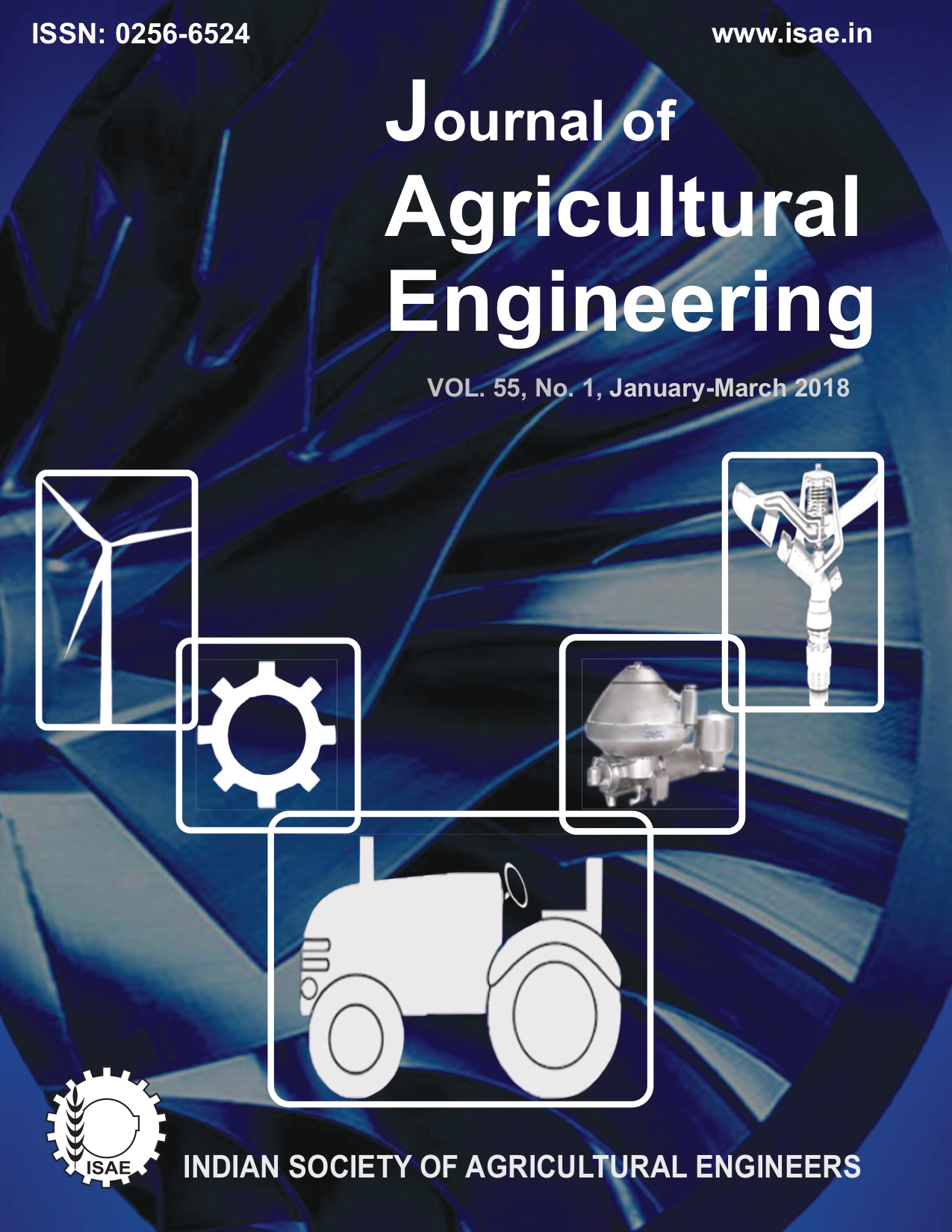Assessment of Loose Residue Entanglement in Various Patterns of Furrow Opener Arrangement
DOI:
https://doi.org/10.52151/jae2018551.1642Keywords:
Furrow opener pattern, residue accumulation, crop residue management, residue flowAbstract
Poor residue handling capability of no-till drills in combine harvested rice and wheat fields during sowing of wheat in rabi and pulses in kharif is a major barrier for their extensive use. The problem aggravates more due to lesser inter-spacing between furrow openers and their arrangements on only two toolbars. A study was conducted to assess the effect of furrow opener arrangements on residue accumulation on a test setup with three toolbars and seven inverted-T type furrow openers. Six patterns of furrow opener arrangements were evaluated in combine harvested wheat field. Furrow openers in V-type arrangement of 2, 2 and 3 on front, middle and rear toolbar, respectively, (Arrangement-B) was the best in terms of residue entanglement and accumulation of 121 g.m-1 length. No residue accumulation was observed when the setup was operated under chopped residue condition with same arrangement. Residue flow percentage was 100% for this arrangement. The result suggested arranging the furrow openers on three toolbars with wider furrow opener spacing to minimize the residue accumulation while drilling pulse crops under no-till residue condition after wheat harvesting.
References
Early R; Tim P; Peter B; Sean C. 1999. Best management practices for stubble. In: Stubble Retention: Reference Manual Murray Stubble Management Working Group, Eds.), Charles Sturt University, Wagga, NSW, Australia, 47–71.
Jin H E; Hong-wen L I; McHugh A D; Qing-jie Wang; Hui L I; Rasaily R G; Sarker K K. 2012. Seed zone properties and crop performance as affected bythree No-Till seeders for permanent raised beds in arid Northwest China. J. Integr. Agric., 11(10), 1654-1664.
Mead J A; Qaisrani R. 2003. Improving stubble flow through tines on agricultural machinery. Biosyst. Eng., 85 (3), 299–306.
Murmu K. 2010. Design and development of combined conservation tillage machine with chiselers and clod pulverizing roller. Unpublished M.Tech. Thesis, Farm Machinery and Power Engineering, G.B.P.U.A. & T., Pantnagar, India.
Pathak H; Sarkar M C. 1994. Possibility of incorporating rice residue into soil under rice-wheat cropping system. Fertilizer News, 39(10), 51–53.
Pependick R. 2002. Managing soil cover and roughness. In: Farming with the Wind, Chapter 4, Department of Crop Soil Science, Washington St. Univ., 17-22.
Sharma M P; Bali S V. 1998. Effect of rice-residue management in wheat yield and soil properties in rice-wheat cropping system. Indian J. Agric. Sci., 10, 695–696.
Singh T P; Singh Jayant; Rajkumar. 2006. Study on different tillage treatments for rice-residue incorporation and its effect on wheat yield in Tarai region of Uttaranchal. Agric. Mech. Asia Afr. Lat. Am., 37(3), 18-24.
Singh T P. 2016. Energy and economic assessment in tillage and sowing for rotavators, conventional and notill wheat establishment. Agric. For., 62 (4), 101-108.
Slattery M; Riley T. 1997. The influence of tine parameters on stubble handling ability. Agric. Eng. Aust., 26, 19–26.
Slattery M G. 1998. A study of the balance of tine pattern factors for operating in wheat stubble. In: Proceedings of the International Conference on Engineering in Agriculture, Perth, Australia, pp: 44.
Zhu G H; Li W Y; He J. 2008. Design and experiment on 2BFML-5 no-till planter for permanent raised bed. Trans. Chin. Soc. Agric. Mach., 2, 51-54.














